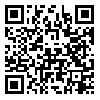Volume 55, Issue 1 And 2 (30 1997)
Tehran Univ Med J 1997, 55(1 And 2): 14-20 |
Back to browse issues page
Download citation:
BibTeX | RIS | EndNote | Medlars | ProCite | Reference Manager | RefWorks
Send citation to:



BibTeX | RIS | EndNote | Medlars | ProCite | Reference Manager | RefWorks
Send citation to:
Hekmatara M. Vestibular Schwannoma or acoustic neuroma. Tehran Univ Med J 1997; 55 (1 and 2) :14-20
URL: http://tumj.tums.ac.ir/article-1-1664-en.html
URL: http://tumj.tums.ac.ir/article-1-1664-en.html
Abstract: (18396 Views)
Vestibular schwannoma is the most common tumor of the posterior fossa of the skull. Patients referred with the primary otologic symptoms such as hearing loss, tinnitus, vertigo, imbalance, and the cranial nerve palsy. Thirty-three patients were operated and treated by a team of otolaryngologist and neurosurgeon, anudiometrist, and internist. Patients'chiefcomplaint was due to 94% hearing loss and 27% tinnitus. They scarcely complain of vertigo. If a patient refers with the palsy or paralysis of facial nerve preoperation, we must think of the facial nerve schwannoma or hemangioma or congential cholestoma or malignant metastases rather than acoustic neuroma. The best way for preoperative diagnosis is audiometry, ABR (Auditory Brain Response), and SDS (speech discrimination score) with 90% success, but computer Tomography (CT) scan and MRI (Magnetic Resonance Image) are the valuable anatomic diagnostic radiographic devices. The best method of operation is translabirynthine approach (TLA), since it has the advantages such as an easy access to nerve paths and being the nearest path to CPA (Cerebellopontine Angle). Physicians ought to talk to patients about the importance of the microscopic surgery, surgical methods, and their probable diverse effects such as hearing loss, facial nerve palsy, and intracranial problems.
| Rights and permissions | |
 |
This work is licensed under a Creative Commons Attribution-NonCommercial 4.0 International License. |





